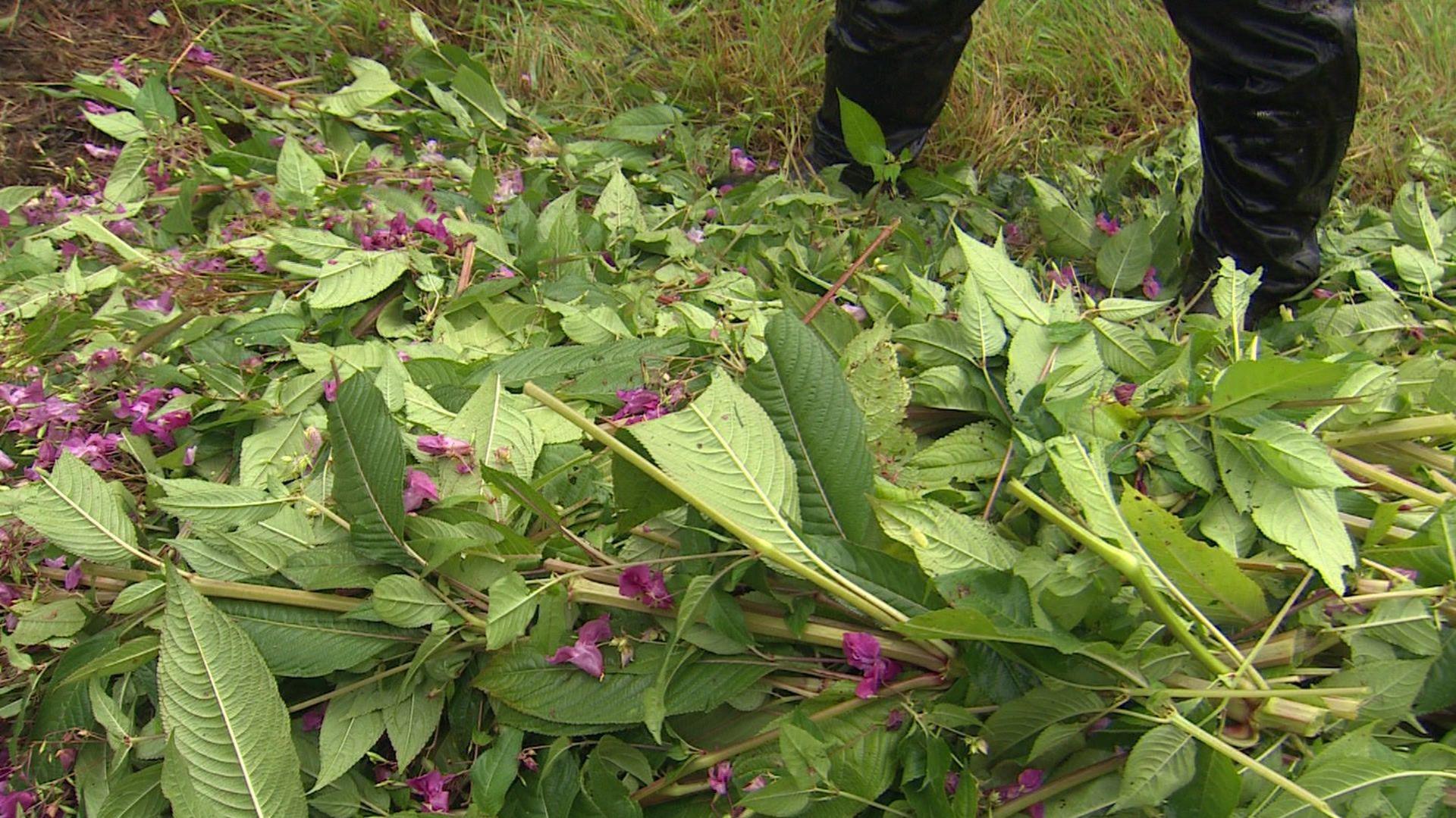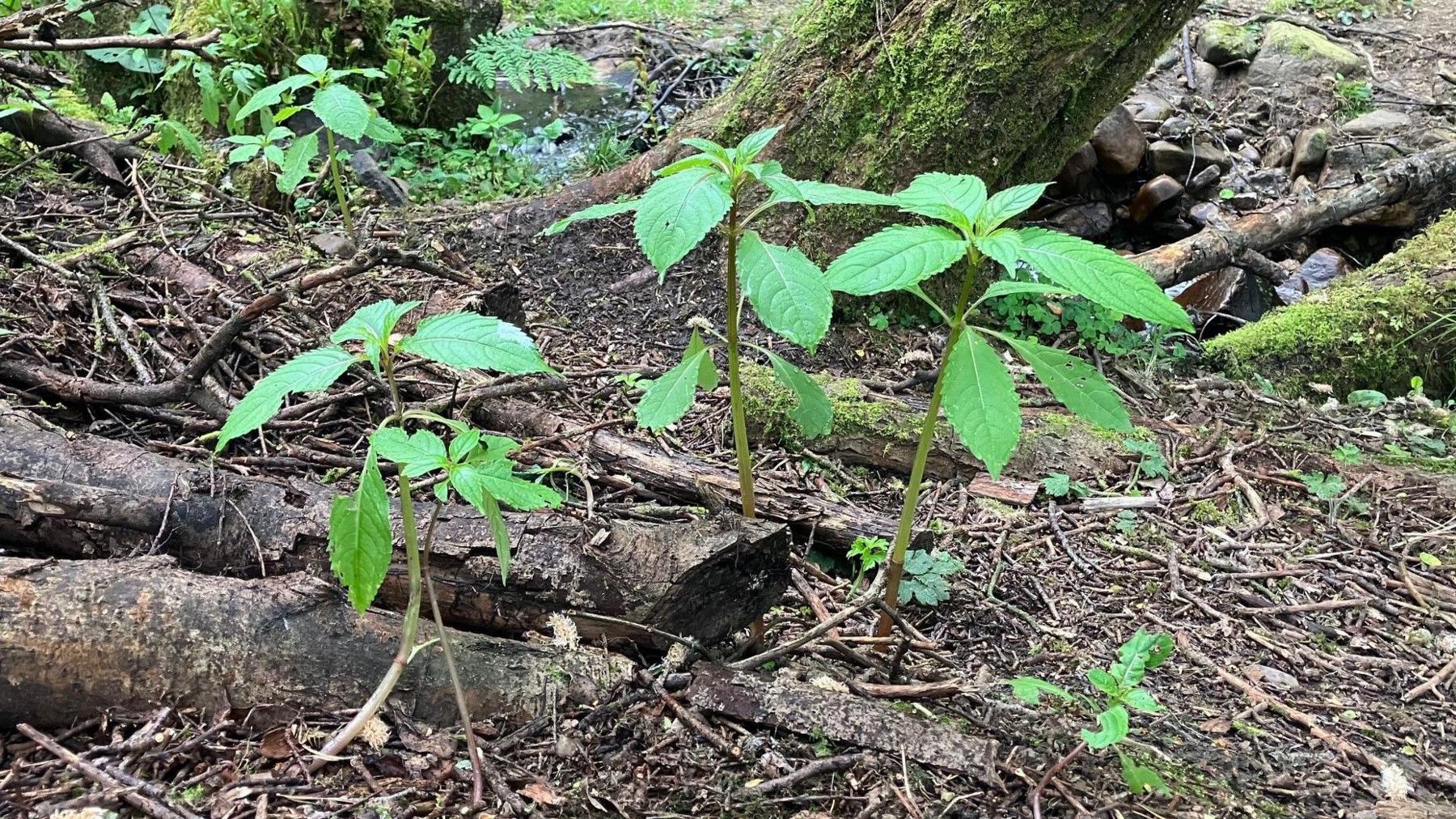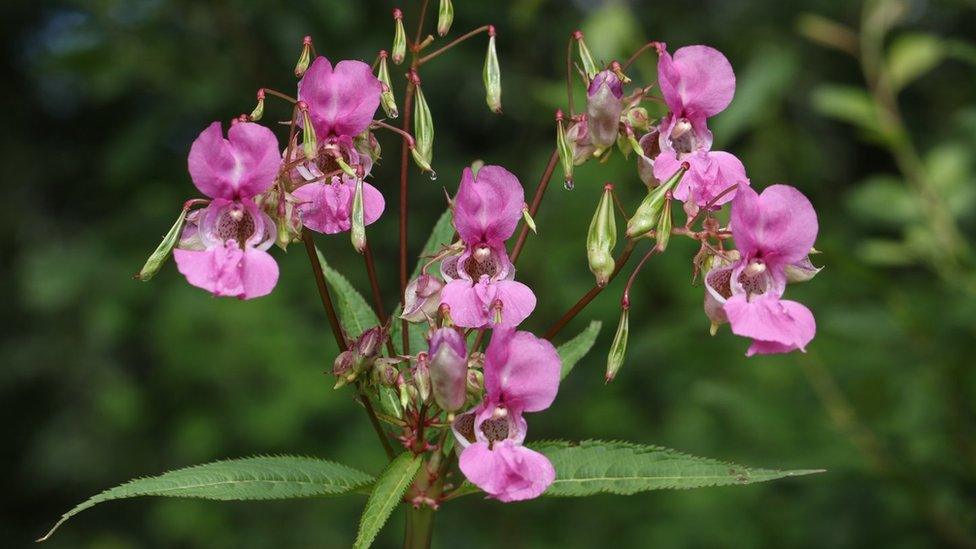Himalayan balsam tackled by volunteers on Dartmoor

The plant can fire seeds up 6 or 7m through the air, according to an expert
- Published
Volunteers led by an invasive species expert have been working to rid Dartmoor of an Asian plant crowding out native vegetation.
The Himalayan balsam, which grows in the foothills of the Himalayas in Pakistan and India, was brought to the UK by the Victorians.
Its rapid growth means it has become a major weed problem.
Mervyn Newman, an invasive plant expert working for Dartmoor National Park, said it was particularly a problem on riverbanks.
'Exponential' growth
He said the plant took up space on the riverside ordinarily occupied by native species, leading to erosion when the balsam disappears by late autumn.
It also produces more nectar than other plants, distracting bees from pollinating local plants, he said.
The plant can fire seeds up to 6m (20ft) to 7m (23ft) through the air, he added.
"The growth can be sort of exponential," he said.
"Once it gets to a point that it goes mad [and] it's dominating... I wouldn't say it's too late to deal with but it's much more difficult to deal with."
Gundel Bonfield, a volunteer working with Mr Newman, said people could help remove the plant by pulling it up and cutting it into smaller pieces.
She said it was better to pull up the plant before seeds began to set, interrupting its flowering and seeding.
"Everybody can help," she said.
Follow BBC Devon on X (formerly Twitter), external, Facebook, external and Instagram, external. Send your story ideas to spotlight@bbc.co.uk, external.
Related topics
- Published9 June 2024

- Published28 August 2022
